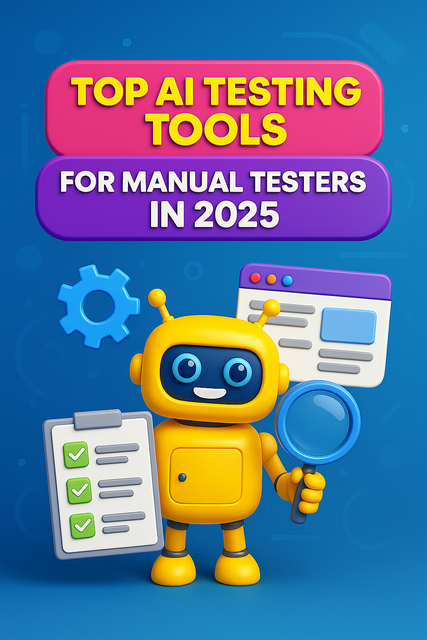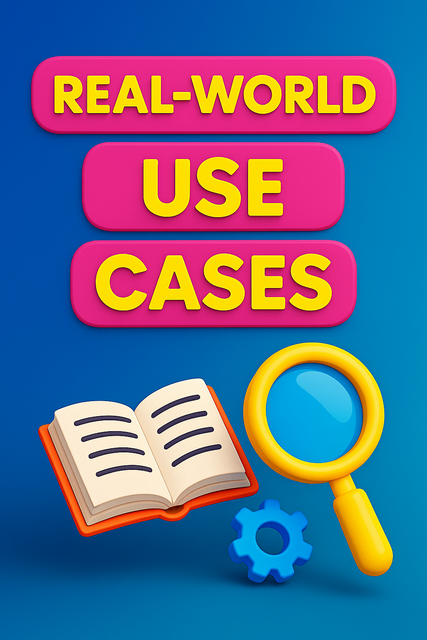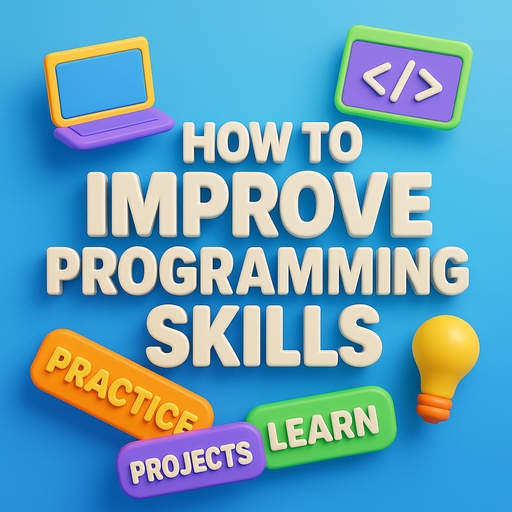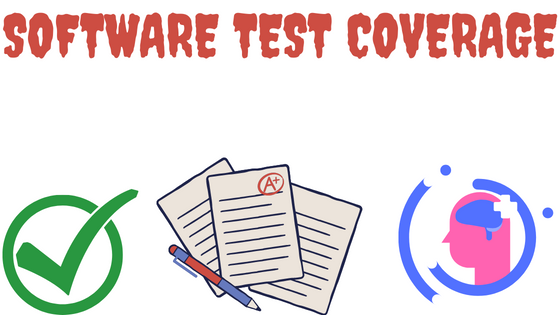Table of Contents
Introduction
As a manual tester, you may have wondered: “Where do I fit in the era of AI?” You’re not alone. The software testing industry is evolving rapidly, and artificial intelligence (AI) is at the heart of that transformation. But here’s the good news: AI isn’t your replacement, it’s your sidekick. It’s here to help you test smarter, not harder.

Manual testers have long been the gatekeepers of software quality. They bring empathy, real-world scenarios, and exploratory insights that machines still can’t match. But let’s face it: the pace of development is relentless, and traditional methods aren’t enough to keep up. AI testing tools are designed not to replace testers, but to extend their reach.
Take the rise of test automation platforms in the 2010s, which was initially intimidating, but is now indispensable. AI follows the same curve. In 2025 and beyond, testers who learn how to work with AI will thrive. Those who ignore it? Risk of falling behind.
In this guide, we’ll dive deep into the top AI testing tools for manual testers in 2025, their benefits, use cases, challenges, and how to integrate them into your workflow without losing your core strengths.
👉 …AI is at the heart of that transformation.
Why AI Matters for Manual Testers
Manual testing isn’t going anywhere. However, it is becoming increasingly collaborative, thanks to AI.

🧠 Traditional Manual Testing vs. AI-Assisted Testing

AI doesn’t replace your role — it elevates it. You remain the thinker, explorer, and decision-maker. AI just clears the clutter.
👉 …AI isn’t your replacement — it’s your sidekick.
Benefits of Using AI Testing Tools in Manual Testing

1. More Efficient Test Case Generation
AI tools like Functionize and ChatGPT can interpret user stories, PRDs, or Jira tickets and generate test cases. Instead of spending hours crafting cases manually, testers can now validate, adjust, and expand AI-generated scenarios.
Real-world example: A team at a logistics startup reduced test design time by 60% after adopting NLP-based test generation.
2. Visual Regression Testing
Applitools, Percy, and others detect pixel-level discrepancies across browser/device snapshots. You can run hundreds of comparisons in seconds.
Added value: AI eliminates false positives by understanding context — shadows, font rendering, and color depth don’t trigger alerts unless they’re meaningful.
3. Self-Healing Tests
Tools like Mabl and Testim auto-update XPaths or selectors when UI changes slightly. No need to manually fix broken tests after each deployment.
4. Behavior and Usage Pattern Insights
AI doesn’t just test — it learns. By watching real user flows and behavior (via logs, heatmaps, or analytics), AI tools highlight untested areas.
5. Smart Bug Detection
By comparing new builds with previous ones, AI can flag anomalies, unexpected responses, and flakiness, often before you even run tests.
…can flag anomalies, unexpected responses, and flakiness…
👉 especially when understanding the difference between bug, issue, defect, and error becomes critical
👉 Manual testers bring exploratory insights…
Challenges Manual Testers Might Face

🧪 Learning Curve
Expect 1–2 weeks of onboarding for any new AI testing tool. Start with free courses (Testim Academy, Applitools U, OpenAI docs). Assign a pilot owner in your team.
🔧 Integration Overhead
Tool adoption isn’t just about testing; it must plug into CI/CD, GitHub, Slack, Jira, TestRail, etc. Poor integration means poor ROI.
⚠️ Over-Reliance on AI
AI can hallucinate. It needs critical human review, especially in exploratory and accessibility testing. It complements, not substitutes.
💰 Cost Barriers
Most tools have per-user pricing or usage limits. Free trials help, but budget approvals may take time. Consider tools with strong free tiers first (e.g., ChatGPT, Testim).
👉…some tools still require a basic understanding…
Top AI Testing Tools for Manual Testers in 2025

1. Testim
- Purpose: Codeless + low-code test automation
- Strengths:
- Smart locators reduce flakiness
- JavaScript support for advanced users
- Parallel test execution, CI integrations
- Best For: Web-based UI testing at speed
2. Mabl
- Purpose: All-in-one AI-powered test automation
- Strengths:
- Auto-healing, cross-browser testing
- Visual changes + performance data
- CI/CD hooks + insightful dashboards
- Best For: SaaS teams with fast delivery cycles
Mabl’s strength in visual regression testing allows teams to automate repetitive flows and focus on exploratory work.
👉 Here’s a deep dive into why regression testing is crucial.
3. Functionize
- Purpose: Scalable NLP-based test platform
- Strengths:
- Plain English test creation
- Works across mobile, web
- Smart test execution planning
- Best For: Large QA teams scaling fast
4. Applitools
- Purpose: Visual regression testing
- Strengths:
- Detects UI anomalies missed by humans
- Works with Selenium, Cypress, and WebdriverIO
- Ultrafast grid for parallel execution
- Best For: UI-heavy apps across devices
5. ChatGPT
- Purpose: AI assistant for test planning, test case writing, and automation help
- Use Cases:
- “Generate test cases for a login feature.”
- “Write Cypress test for checkout flow”
- “Summarize this bug report.”
- Best For: Fast ideation, documentation, debugging
6. Katalon TestOps
- Purpose: Test analytics, flaky test detection
- Strengths:
- Historical trends, failure clustering
- Scheduler based on environment readiness
- Best For: QA managers needing test visibility
7. QA Wolf
- Purpose: Test automation-as-a-service
- Strengths:
- 80% coverage in weeks via browser testing
- Written + maintained by their team
- Best For: Teams lacking automation resources
8. ReTest
- Purpose: Regression testing for Java apps
- Strengths:
- Smart UI diffs
- Model-based test generation
- Best For: Java-heavy enterprise backends
9. Test.AI
- Purpose: Mobile app testing via crawlers
- Strengths:
- AI-driven UI exploration
- Minimal scripting needed
- Best For: App stores, fintech, social platforms
10. Virtuoso
- Purpose: NLP-based test authoring
- Strengths:
- Voice or text-based test writing
- Autonomous test execution
- Best For: Non-technical testers scaling fast
Ensuring your UI renders correctly across devices and browsers is critical — and often overlooked in manual testing.
👉 Think your website works on all browsers? Prove it.
👉…these tools offer automation, insights, and optimization.
Real-World Use Cases

🔍 Logistics SaaS Company: Testim
- Problem: Manual test creation took 6+ hours per sprint
- Solution: Switched to Testim for 80% UI coverage
- Result: Sprint testing dropped to 90 mins
🏦 Fintech Startup: Applitools
- Problem: Mobile UI bugs weren’t caught manually
- Solution: Adopted Applitools for baseline comparison
- Result: Detected 30+ layout defects in one release
🛒 E-Commerce Platform: ChatGPT
- Problem: Missed edge cases in ambiguous user stories
- Solution: Prompts fed to ChatGPT to suggest coverage gaps
- Result: Found 5 major untested paths during UAT
👉…common gaps in test case coverage.
Best Practices for Manual Testers Adopting AI

- 📌 Start Small: Pick one feature or module for a pilot
- 🧠 Stay Human: Use AI to amplify, not replace your intuition
- 🧪 Review Outputs: Validate all auto-generated tests
- 📚 Keep Learning: Follow tool blogs, take free AI/QA courses
- 🤝 Collaborate with Devs: Jointly tune the AI tool integration
- 📈 Track ROI: Measure defects found, hours saved, coverage %
👉Start with one tool and train your team…
Final Thoughts
AI won’t replace you. But testers who understand AI will replace those who don’t. This isn’t just a tech shift — it’s a mindset shift. Testing is no longer just about scripts or test cases — it’s about intelligence: human + artificial.
If you’re a manual tester today, you’re in a prime spot to lead this transformation.
- Adopt tools that amplify your strengths
- Upskill at your own pace
- Share what you learn with your team
Start now. Be the QA leader who blends intuition with innovation.


